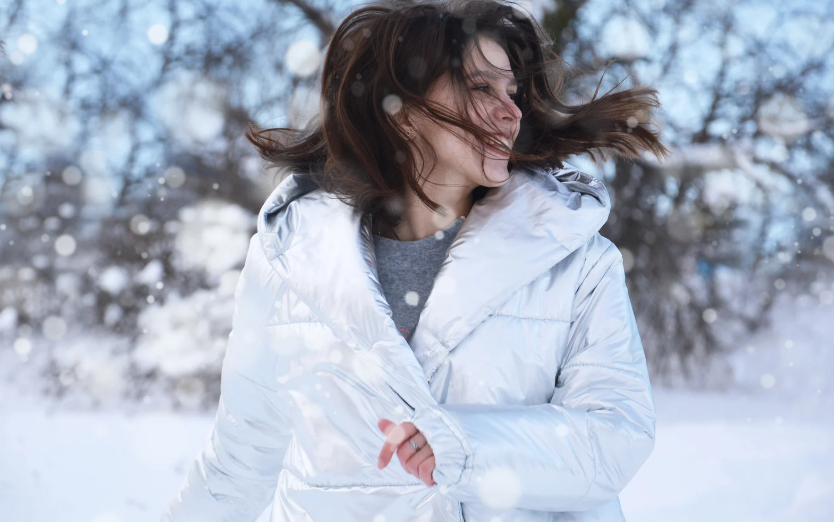
Ways to prevent excessive shedding in winter season
For most women, autumn is the most severe season for hair shedding. It can be quite demoralising for some women, particular for those who are already prone to baldness and thinning hair.
Fortunately, seasonal hair loss is only temporary, and once the season has passed, the hair tends to grow back as normal. And, although some of us still shed hair during the colder months of the year, it is known that winter season is actually the time of year when our hair goes through its strongest growth phase.
What is seasonal hair loss?
Seasonal hair loss is something that happens during a certain time of the year. It’s a phase whereby the hair sheds excessively, as part of the hair growth cycle. A bit like seasonal allergies, seasonal shedding occurs when a shift in temperature puts stress on the scalp and follicles, which leads to strands falling out. Autumn tends to be the most common shedding season, whilst winter is the season we tend to shed the least amount of hair.
In most cases, seasonal shedding is temporary, however, it can develop into a long-term problem for some people, which is why prevention treatments and techniques should be used. Also, as mentioned, if you are already prone to hair loss, then seasonal shedding can be an unwanted addition to the issue.
How to deal with seasonal hair loss in winter season
Seasonal hair loss cannot be stopped, but it can be minimised with a good hair care plan. Luckily, as mentioned, winter is actually the best season for our hair to thrive. Most people experience more hair growth during the colder months of the year. However, a good hair care plan is still needed.
Here some winter hair care tips that will help protect your hair from the harsh elements, and keep it thriving well into spring season…
Wear hats
Wearing hats outdoors will help shield your strands from the moisture-robbing dry air, snow, wind, and rain. The winter elements can be quite damaging to your locks, making it more prone to breakage, so doing something as simple as wearing a hat, can go a long way.
Use a humidifier
Indoor heating causes the air in your home to become very dry, pulling moisture out of your hair. Humidifiers help rehydrate the air to keep your locks looking lustrous. Investing in a humidifier will do wonders for your hair. It will help keep it moist, healthy, and less prone to shedding.
Get regular hair cuts
Getting your hair trimmed every three to six weeks is a good way to maintain hair health and keep your locks looking fresh and full. Something this simple will give your hair the platform to thrive.
Do not leave the house with wet hair
You shouldn’t really do this during any time of the year, but it’s absolutely crucial that you do not go out in the cold with wet locks. Wet in cold surrounding can be an absolute nightmare for your strands, and by doing this, you are inviting trouble.
Your hair will be prone to breakage, damage, and shedding. Always keep your locks protected, especially when you are outdoors, in the cold.
Moisturise your hair
When winter wreaks havoc on your hair, restore moisture with an oil-based hair treatment. Choose a lightweight leave-in formula with argan oil to instantly revitalize dry, damaged hair. Apply nourishing hair oil at the ends daily to help replenish moisture and protect your hair.
Use a topical serum on your hair
A good topical treatment, like KGF Hair Growth Serum, can help combat the effects of thinning hair, and promote the function of healthy hair growth. This serum works at the root cause of hair shedding, and can add better density to the hair.
Live and eat healthy
Your hair is no different to any other part of your body – the better you look after it, the better it will thrive. Feeding your body with the right nutrients, and getting plenty of exercise and fresh air, can only be of benefit to your strands.
Getting your body active regularly is the most beneficial thing you can do for yourself, and of course your hair. Also, be sure to clean up your diet, especially after the festive season of indulgence – eat lots of high-protein foods, and avoid junk food where possible. The healthier you eat, the more your hair is likely to thrive.
Here is an article about what foods are great for healthy hair growth.
Conclusion
Seasonal hair loss is a hair shedding phase that can occur at any point of the year, but for most women it tends to happen during the spring or autumn months. Winter season is the best hair growth period of the year, but a good hair care plan should still be in place, particularly if you are already prone to hair loss.
The better you look after your hair during the winter months, the better position you will be in when the spring shedding season comes around. Spring is another heavy shedding season, so it’s absolutely crucial to get the best out of your hair during winter.
Seasonal shedding can be a problem if you are already suffering from another form of hair loss, such as pattern baldness, postpartum hair loss, menopausal hair loss, or stress-related hair fall, for example. This is where you would need to use hair loss treatments in conjunction with a good hair care plan and healthy lifestyle, but be sure to use a hair care regimen that doesn’t make the seasonal shedding worse.
Stick to non-medical treatments, naturally made cosmetics, and minimise your usage of heat based devices. These little adjustments can benefit your locks, hugely.


Leave a Reply